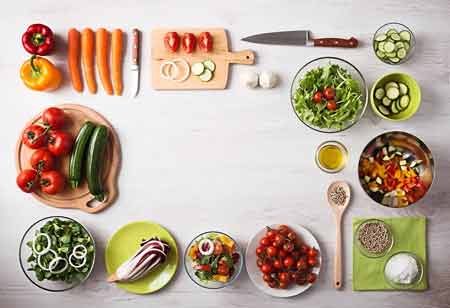Thank you for Subscribing to Food Business Review Weekly Brief
- Home
- Topics
- Alternative Proteins and Plant Based Food
- Beer and Wine
- Canned Beverages
- Coffee And Tea
- Food and Beverage Consulting
- Food and Beverage Financial Service
- Food And Beverages Marketing
- Food Distributors
- Food Ingredients
- Food Sustainability
- Plant Based Food and Beverages
- Seafood Suppliers
- Supplement Manufacturing
- Wine Investment
- News
- Vendor Viewpoint
- CXO Insights
- Conferences
- Newsletter
- CXO Awards
-
Exploring the Vital Role of Food Processing in Modern Food Business
In today's fast-paced world, where food supply chains span the globe, the role of food processing is more critical than ever.

By
Food Business Review | Monday, January 23, 2023
Stay ahead of the industry with exclusive feature stories on the top companies, expert insights and the latest news delivered straight to your inbox. Subscribe today.

Food processing is a dynamic and integral part of the global food industry.
FREMONT, CA: In today's fast-paced world, where food supply chains span the globe, the role of food processing is more critical than ever. Food processing serves as the bridge between the farm and the table, ensuring that nutritious, safe, and convenient food products are available to meet the diverse needs of consumers. This article delves into the significance of food processing and its transformative impact on the food business landscape.
The Evolution of Food Processing
Food processing is as old as civilization, with early methods involving drying, salting, fermenting, and preserving foods to extend their shelf life. However, modern food processing has evolved into a highly sophisticated and technology-driven industry.
The Key Functions of Food Processing
1. Preservation: Food processing techniques, such as canning, freezing, and drying, help extend the shelf life of perishable foods.
2. Enhancement: Processing can improve the flavor, texture, and appearance of food products, making them more appealing to consumers.
3. Safety: Stringent quality control and safety measures are integral to food processing, reducing the risk of foodborne illnesses.
4. Convenience: Processed foods offer convenience to consumers, requiring less preparation time and effort.
5. Nutrient Retention: Some processing methods, like flash freezing, can help preserve the nutritional content of foods.
The Diversity of Food Processing Techniques
1. Thermal Processing: Techniques like pasteurization and sterilization involve heat treatment to kill or inactivate harmful microorganisms, ensuring food safety.
2. Freezing: Flash freezing locks in the freshness of fruits, vegetables, and seafood, preserving their quality.
3. Dehydration: Removing moisture through drying processes like air, sun, or freeze-drying enhances food shelf life.
4. Canning: Canned foods are sealed in airtight containers, preventing spoilage and extending shelf life.
5. Extrusion: This process creates various products, including pasta, breakfast cereals, and snacks.
Innovation in Food Processing
1. Clean Label Products: Consumer demand for natural and minimally processed foods has driven the development of clean-label products free from artificial additives and preservatives.
2. High-Pressure Processing (HPP): HPP is a non-thermal preservation method that maintains food quality while ensuring safety.
3. Sustainable Packaging: Environmentally friendly packaging materials and practices are becoming increasingly important in food processing.
4. Nutraceuticals: The integration of health-promoting ingredients into processed foods is gaining momentum.
Challenges and Responsiveness
Food processing faces challenges related to consumer demands for healthier and more sustainable options and concerns about food waste and safety. The industry is continually adapting and innovating, exploring solutions such as reduced salt and sugar content, plant-based alternatives, and advanced packaging technologies.
Conclusion
Food processing is a dynamic and integral part of the global food industry. It plays a pivotal role in ensuring consumers access safe, nutritious, and convenient food products. As the food business landscape continues evolving to meet the changing world's demands, food processing will remain at the forefront of innovation, sustainability, and safety. In essence, food processing is not just about transforming raw ingredients; it's about nourishing the world and ensuring that food remains a source of joy, sustenance, and culture for generations.
Check Out This: Top Food Safety Services.






